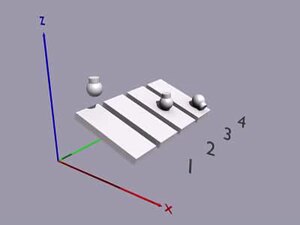Physics engine
|
These are four examples of a physics engine simulating an object falling onto a slope. The examples differ in accuracy of the simulation:
|
A physics engine is computer software that provides an approximate simulation of certain physical systems, such as rigid body dynamics (including collision detection), soft body dynamics, and fluid dynamics, of use in the of computer graphics, video games and film. Their main uses are in video games (typically as middleware), in which case the simulations are in real-time. The term is sometimes used more generally to describe any software system for simulating physical phenomena, such as high-performance scientific simulation.
There are generally two classes of physics engines: real-time and high-precision. High-precision physics engines require more processing power to calculate very precise physics and are usually used by scientists and computer animated movies. Real-time physics engines—as used in video games and other forms of interactive computing—use simplified calculations and decreased accuracy to compute in time for the game to respond at an appropriate rate for gameplay.
One of the first general purpose computers, ENIAC, was used as a very simple type of physics engine. It was used to design ballistics tables to help the United States military estimate where artillery shells of various mass would land when fired at varying angles and gunpowder charges, also accounting for drift caused by wind. The results were calculated a single time only, and were tabulated into printed tables handed out to the artillery commanders.
...
Wikipedia

